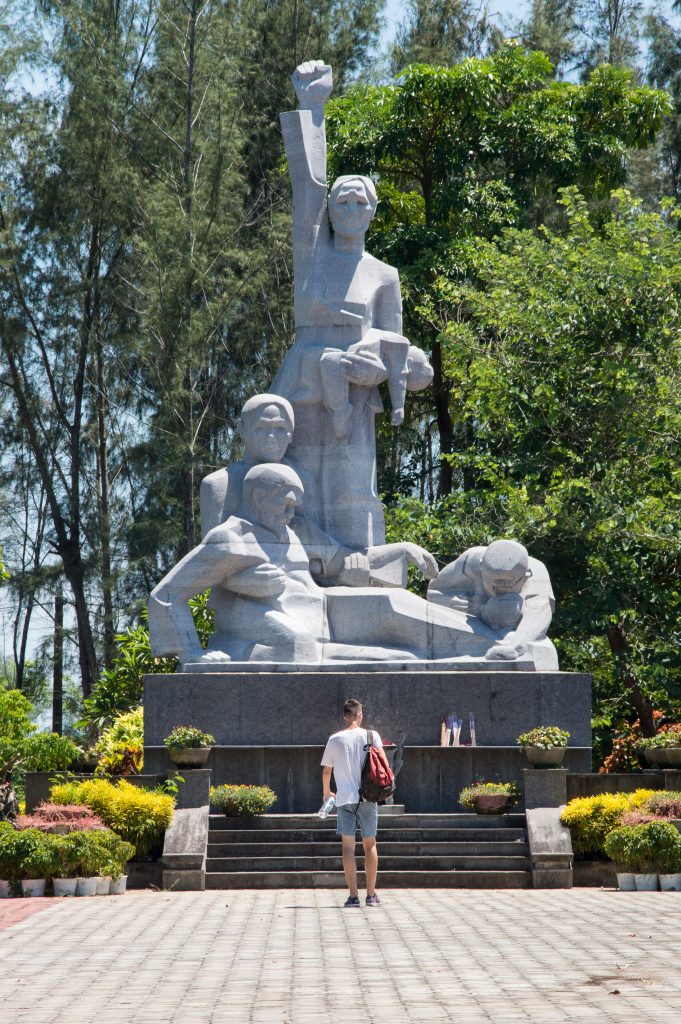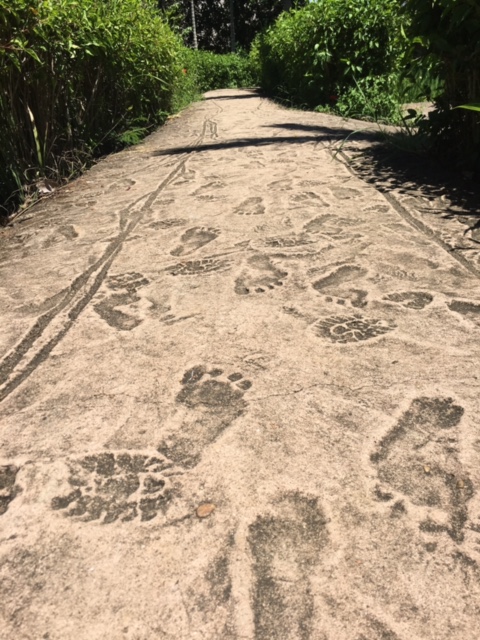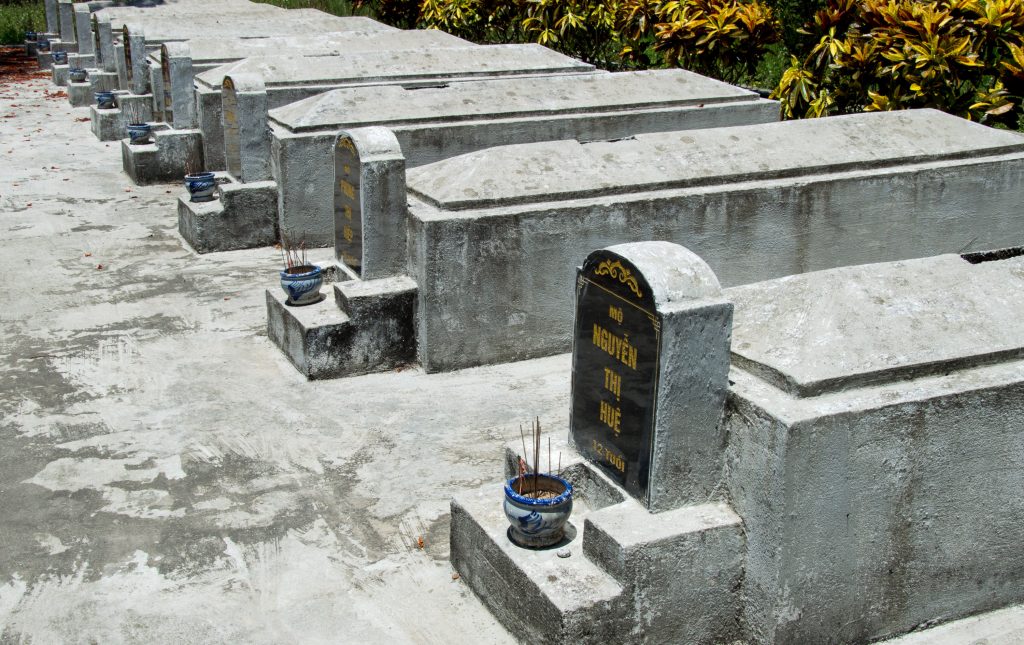The following post features student writing.

Noah in front of the My Lai memorial statue
As the sun began to peek over the encompassing mountains, the entire group met for a rejuvenating session of Tai Chi on the white sanded beach just beside our hotel. We then all got in a good Vietnamese breakfast, and left for the My Lai massacre commemoration site. The visit was emotionally heavy, as the museum and introductory video delved into the unexplainable terror and atrocities committed on that infamous March day. We walked through the former village and witnessed the burned down huts and walked through the cemented footprints of both the soldiers and villagers.
After the visit was over, we all boarded the bus and left for Quang Nai, the closest city to our rural village. There we enjoyed and scarfed down a traditional Vietnamese lunch, consisting of fresh mint, chicken, rice, and spices. This savory meal was paired with an ice cold green tea. Feeling filled, we headed to a Buddhist temple nestled in the mountains. As the rain typical of the monsoon season began to pour, we perused the gardens and observed the ornate temple. After, the group went to a restaurant where we were served a delicious soup, mixed with peanuts and meat, a salty broth, and savory herbs. To finish off the day we visited a night market, and took in the sights and sounds all the while sipping on a healthy smoothie. What a day!
– Noah H.

Note from trip leader:
The My Lai Massacre was only one of many senseless atrocities of the Vietnam War, but publicity from this particular incident was a major turning point in public opinion, when America’s initiative in Southeast Asia drew serious scrutiny from the US and the rest of the world. Though a few named American soldiers bore the blame for My Lai in proceeding war crime trials, the driving force behind this and other barbarities was a culture of terror and dehumanization propagated on both sides of the conflict, which innocent civilians were tragically caught between.
The big question that still hangs over My Lai is “why.” Why did this happen? How could young men inflict such violence on other human beings? This was the focus of our group debrief at My Lai. We talked about how hard it is to place definitive blame for individual murders amid the blur of war.
The museum video iterated an age-old cycle, in which successive generations always have the opportunity to learn from mistakes of the past, but never seem to do so. By visiting My Lai, however, our group is making our respective gesture for peace. Though we cannot mend the wounds of the past, maybe we can help prevent them from happening again. I would like to personally thank all the travelers on this trip and also their families for choosing Vietnam. We visit this place as ambassadors of the generation after the war, to return violence with tolerance and respect. I know that everyone in our group has left these memorials with a greater understanding not only of the Vietnam War, but also of the full spectrum of human nature, —from violent to peaceful, ugly to beautiful.
Thank you.
– Jesse Weber
